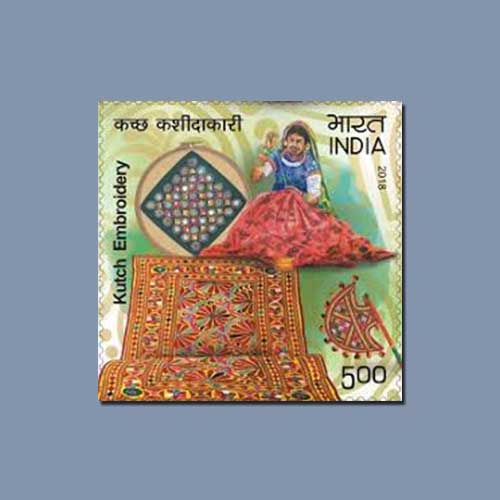Traditional Craft of India: Kutch Embroidery
2019-11-04 Mon
According to historians Kutch embroidery was brought about by ‘Kathi’ cattle breeders. Later on, they settled down in the Gujarat area and created some fine needlework that displayed a variety of elements, designs, themes, patterns and moods known as Kutch embroidery.This embroidery has been practice and created in Gujarat-kutch are for centuries and between 16th and 17th centuries Kutch embroideries masterpieces were exported to western countries. It is also believed that mochis or shoemakers were taught Kutch embroidery 300 years ago by a Muslim wanderer in Sindh and that is what started the tradition.
The embroidery of Kutch further clubbed with the native tradition of Sindh tradition which evolved six styles like Suf, Khaarek, and Paako, Rabari, Garasia Jat and Mutava. In March 2013, these color handicrafts of Kutch received the registry of Geographical Indications (GI). India Post also issued a stamp illustrating this craft in series handicraft on stamps in 2018.
To know more about stamp Visit philamart to view and purchase variety of stamps from all over the world.
Image Source: Google Images
Latest News
-
Science and Technology on Indian Postage Stamps-6
2025-11-12 WedSir Mokshagundam Visvesvaraya is regarded as one of India's most distinguished engineers. His innova...
-
Science and Technology on Indian Postage Stamps-5
2025-11-11 TueSir Jagadish Chandra Bose recognized as India's first biophysicist was born on 30 November 1858, in ...
-
'Al-Sultan' Type Copper Double Falus of Malwa Sultan Ghiyath Shah
2025-11-07 FriAnother type of Copper Double Falus of Malwa Sultan Ghiyath Shah, weighing 17.5-18.1g. <br><br> I...
-
Science and Technology on Indian Postage Stamps-4
2025-11-07 FriThe last stamp in the series issued by India Post on 11 September 1997, to commemorate the 50th anni...
-
Science and Technology on Indian Postage Stamps-3
2025-11-06 ThuThe next #stamp in the series issued by #India #post on 11 #September 1997 commemorates the 50th an...

